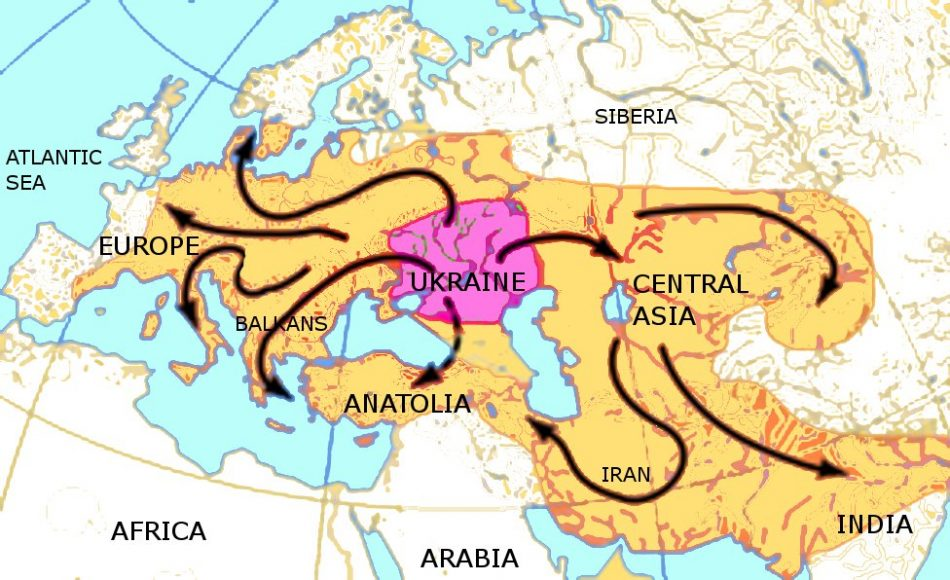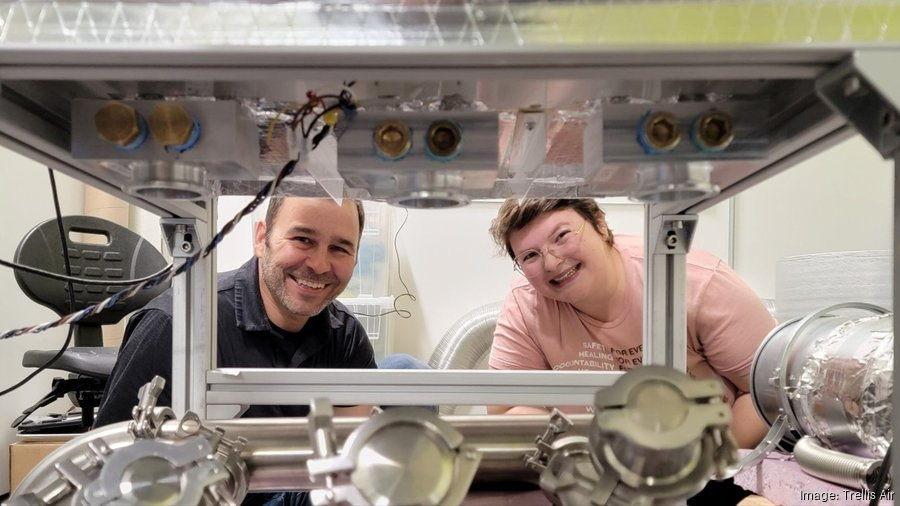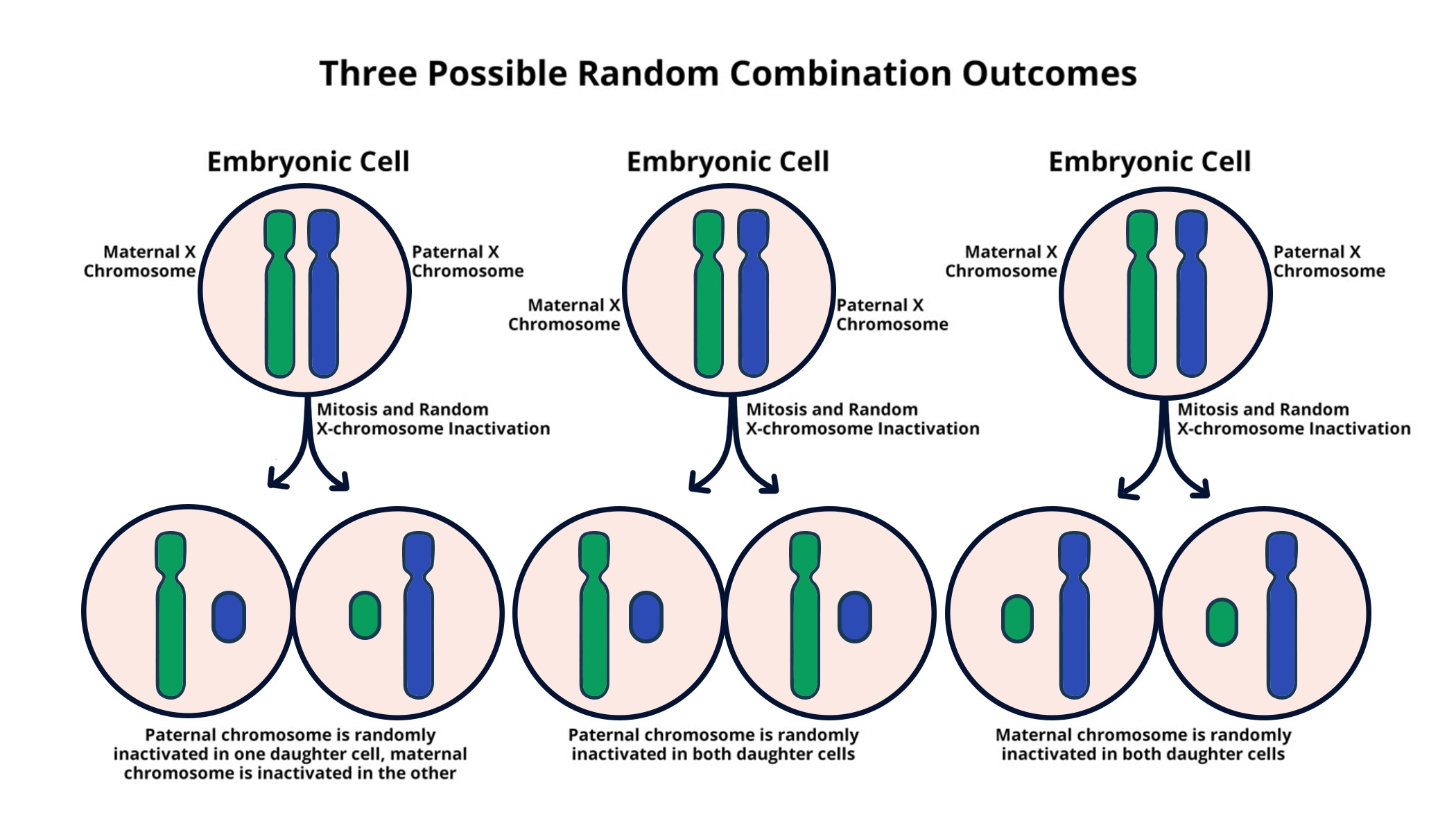The origin of Indo-European languages, a family spoken by over 40% of the global population, has been traced back to 6,500 years ago in the region today known as Russia. Recent landmark studies have identified the speakers of this ancestral language as the Caucasus Lower Volga people, who thrived during the Eneolithic period. These linguistic innovators spread not only their language but also their genetic ancestry, as they intermixed with various local populations across the steppe. Findings suggest that the Yamnaya people played a pivotal role in the dissemination of proto-Indo-European language, carrying with them a new culture and societal practices through their migrations. This insightful genetic research paints a comprehensive picture of how these ancient communities influenced modern languages, leaving a lasting legacy that resonates in many of today’s diverse tongues.
Exploring the roots of the Indo-European language family unveils a rich tapestry of human history and migration. Often referred to as the origin of several major world languages, these ancient tongues emerged from a shared linguistic ancestor primarily associated with the expansive steppe regions of Eurasia. Researchers have pinpointed this ancestral population to the inhabitants of the Caucasus Lower Volga, who significantly contributed to language development and cultural exchange during early historical periods. Notably, the Yamnaya people have been highlighted for their dynamic role in spreading these languages and shaping genetic lineages across Europe and Asia. The intricate narrative of language origin intertwines with human genetics, revealing how the movements of these early societies laid the foundational stones of communication that connect us today.
Tracing the Origins of Indo-European Languages
The study conducted by renowned researchers has shed light on the origins of the Indo-European languages, which encompass over 400 languages spoken by approximately 40% of the world’s population. By analyzing ancient DNA from the Caucasus Lower Volga people, who lived around 6,500 years ago in present-day Russia, researchers have begun to piece together the historical puzzle of these languages. The findings suggest that this group played a pivotal role in linguistic and cultural diffusion across Europe and parts of Asia, starting from their homeland near the lower Volga River.
The emergence of the Indo-European language family was influenced significantly by the Yamnaya people, who were the first major group identified as language disseminators. Their nomadic lifestyle and innovations, such as horseback riding and oxen-towed wagons, allowed them to traverse vast distances, facilitating interactions and exchanges with various neighboring cultures. This mobility not only enabled them to expand their herding economies but also spread their ancestral language, leaving a lasting impact on linguistic diversity across the continents.
The Role of the Yamnaya People in Language Dissemination
The Yamnaya culture, flourishing on the Eurasian steppes, is a central focus in understanding the dissemination of proto-Indo-European languages. As early pastoralists and horse riders, they developed advanced agricultural techniques that allowed them to sustain larger populations. Their social structures and cultural practices, including burial traditions in kurgans, reveal a lifestyle that was both innovative and adaptive. Genetic analysis indicates that these people intermingled with various groups they encountered, thereby enriching the genetic and linguistic tapestry across Europe.
Moreover, the research highlighted how the Yamnaya marked the transition from a stationary to a more mobile society, fostering connections between distinct communities. With their journeys taking them from the steppes to regions as far as Ireland and Mongolia, the influence of the Yamnaya’s language can be traced across multiple modern languages that evolved from Indo-European roots. This reinforces the hypothesis that their economic and social practices were instrumental in the spread of their languages during the Bronze Age.
Genetic Ancestry and Its Impact on Language Evolution
The investigation into the genetic ancestry of various populations has provided critical insights into how language evolved and spread. The Caucasus Lower Volga people, whose DNA contributed to the modern European gene pool, exemplify the rich history of human migration and interaction. Their genetic legacy not only reveals connections to the Yamnaya but also highlights the complex relationships between ancient communities in the region. By linking genetic data to linguistic patterns, researchers can trace the routes through which Indo-European languages permeated diverse cultures.
As studies continue to unfold, the genetic representation of populations such as the Yamnaya enhances our understanding of linguistic shifts over millennia. It becomes evident that language is not merely a means of communication; it is a reflection of our shared ancestry. The intricate web of genetic connections demonstrates how demographic changes had profound effects on the languages spoken by these groups, emphasizing the importance of genetic research in illuminating the historical narrative of Indo-European languages.
The Steppe Hypothesis: A Framework for Understanding Language Origins
The Steppe Hypothesis has long served as a guiding framework in the study of Indo-European languages and their origins. This theory posits that the early speakers of proto-Indo-European existed in the vast steppes of Eurasia, leading to a proliferation of language as they migrated across Europe and parts of Asia. The hypothesis gained traction through linguistic reconstructions and archaeological findings, but recent genetic evidence has bolstered its credibility, offering a cohesive narrative that blends linguistic and anthropological insights.
This comprehensive view asserts that the human migrations facilitated by the Yamnaya and other related groups were fundamental to the dissemination of these ancient languages. The interplay of genetics, archaeology, and linguistics presents a multi-dimensional understanding of how culture and language intertwine, highlighting the significance of the steppes as a crucible for early human civilization. As researchers delve deeper into this genetic history, the steppe hypothesis continues to provide a vital perspective on language evolution.
Cultural Traditions and Language Among the Yamnaya
Cultural practices among the Yamnaya people not only contributed to their identity but also played a significant role in the transmission of language. Their burial customs, particularly the construction of kurgans, offer a glimpse into their beliefs and societal structures. The consistent practice of honoring their deceased showcases the importance of ritual in maintaining cultural continuity, which in turn influenced the stability and spread of the languages they spoke.
These traditions underscore the bond between language and culture, where the Yamnaya’s linguistic heritage was preserved and propagated through generations. As they initiated contact with neighboring tribes, these social practices became intertwined with their language, creating a rich tapestry of linguistic evolution that reflected their communal identity. By examining such cultural elements, researchers gain a deeper appreciation for how the Yamnaya fostered a legacy that would shape the linguistic landscape of both Europe and Asia.
Impact of Modern Conflicts on Linguistic Research
The current geopolitical climate, particularly the conflict between Russia and Ukraine, has significantly impacted linguistic research surrounding Indo-European languages. The collaboration between researchers from both countries is now fraught with challenges, making it difficult to access and share primary genetic data that is essential in tracing language origins. This situation has led to separate studies that, while valuable, prevent a unified understanding of the complex genetic ties that bind the Indo-European languages.
Despite these obstacles, scholars continue to push forward, adapting their methodologies to work within the constraints imposed by the ongoing conflict. The ability to analyze ancient DNA from various geographic regions remains critical, as it allows researchers to reconstruct historical narratives that might otherwise be lost. In this context, the pursuit of knowledge transcends borders, illustrating how language and culture endure even amid contemporary discord.
Advancements in Genetic Technology and Linguistic Studies
Recent advancements in genetic technology have revolutionized the study of linguistics, offering new pathways for understanding how languages spread and evolve. Techniques such as genome sequencing have enabled researchers to compile comprehensive genetic data sets, which can be correlated with linguistic features across different populations. This integration of genetics and linguistics not only refines our understanding of language origins but also emphasizes the intricate connections between human migration and cultural dissemination.
As scholars harness these technological innovations, the potential to uncover deeper insights into the lineage of Indo-European languages expands significantly. The ongoing collaboration between geneticists, linguists, and anthropologists serves to enrich our comprehension of not just language evolution but also the broader scope of human history. This convergence of disciplines paves the way for future discoveries that could reveal even more about the interwoven nature of language and genetic ancestry.
Reflections on the Yamnaya Legacy in Contemporary Languages
The legacy of the Yamnaya people continues to resonate in contemporary languages spoken across Europe and parts of Asia. The migration and cultural exchanges initiated by these early pastoralists have contributed to the rich tapestry of modern linguistic diversity. Understanding how their language spread into different regions provides essential insights into the historical processes that shaped current languages and their interconnectedness. This reflects not only a linguistic heritage but also an evolutionary journey that highlights the significance of human movement and cultural exchange.
Moreover, by studying the Yamnaya’s place in history, linguists can identify patterns that reflect language change and adaptation over time. As modern languages draw from their Indo-European roots, the enduring influence of the Yamnaya is evident in grammatical structures, vocabulary, and phonetics. Language serves as a living testament to the journeys of our ancestors, demonstrating how language, culture, and identity continue to evolve and thrive through the ages.
The Future of Research into Indo-European Languages
The future of research into Indo-European languages stands at a critical juncture, with both promising opportunities and considerable challenges. Scholars are increasingly utilizing interdisciplinary approaches that combine genetics, linguistics, and archaeology to gain deeper insights into language origins and evolution. The advancements in genetic sequencing promise to reveal more about the genetic links between various populations and their languages, offering a more nuanced understanding of linguistic evolution over millennia.
However, prevailing geopolitical tensions also pose barriers to international collaboration, particularly in regions that are fundamental to the study of Indo-European languages. The resilience of researchers is paramount as they continue to develop new methodologies to gather data and share findings despite these challenges. As we move forward, the necessity for collaboration across borders will remain vital, ensuring that the quest for knowledge transcends conflicts and contributes to our understanding of how languages develop and transform over time.
Frequently Asked Questions
What is the origin of Indo-European languages and the role of the Yamnaya people?
The origin of Indo-European languages traces back to the Caucasus Lower Volga people, who lived approximately 6,500 years ago in what’s now Russia. This group, often associated with the Yamnaya people, is believed to have spoken a proto-Indo-European language. Their movements and interactions facilitated the dissemination of these languages across Europe and parts of Asia.
How do genetic ancestry studies support the theory of Indo-European languages originating from the Caucasus Lower Volga region?
Recent genetic ancestry studies indicate that the Caucasus Lower Volga people, who lived during the Eneolithic period, contributed significantly to the gene pool of modern Europeans and other populations. Analyses of ancient DNA suggest that these early inhabitants interacted with and mixed genetically with other groups, which helped spread proto-Indo-European languages throughout Europe.
What evidence links the Yamnaya culture to the dissemination of Indo-European languages?
Evidence linking the Yamnaya culture to the dissemination of Indo-European languages includes archaeological findings of burial practices, genetic data showing widespread migration patterns from the steppes, and historical linguistics that reveal similarities among languages like Latin and Sanskrit. Their innovative lifestyle, including horseback herding and the use of wheeled vehicles, facilitated their movement and language spread.
What is the significance of the steppe hypothesis in understanding Indo-European languages?
The steppe hypothesis posits that speakers of the proto-Indo-European language originated from the Eurasian steppes, particularly the region of modern-day Russia and Ukraine. This hypothesis is significant as it frames the Yamnaya people’s role as potential originators of these languages, suggesting that their migrations led to widespread linguistic and cultural changes across Europe and into South Asia.
How did the cultural practices of the Caucasus Lower Volga people influence Indo-European languages?
Cultural practices of the Caucasus Lower Volga people, notably their burial customs in kurgans, provided insights into their societal structures and beliefs. These practices, alongside their language, likely influenced the development of various Indo-European languages as they interacted with neighboring populations, facilitating a blending of cultures and linguistic features.
Can we trace modern European languages back to the ancestral proto-Indo-European language?
Yes, modern European languages can be traced back to the ancestral proto-Indo-European language, as evidenced by linguistic similarities and genetic studies confirming the descent from populations like the Yamnaya. These studies illustrate how languages evolved and diversified as they spread from the steppes into Europe.
What role did language dissemination play in the cultural development of the Yamnaya people?
Language dissemination played a crucial role in the cultural development of the Yamnaya people, allowing them to communicate, share agricultural practices, and establish social relationships as they migrated across vast territories. Their proto-Indo-European language served as a vehicle for cultural exchange and the establishment of new communities.
What archaeological findings support the existence of the Caucasus Lower Volga people as the origin of Indo-European languages?
Archaeological findings, such as kurgan burial sites and tools, support the existence of the Caucasus Lower Volga people. These findings help establish their cultural practices and timelines, corroborating genetic data that indicate their movements and interactions with other groups facilitated the spread of Indo-European languages.
| Key Points | Details |
|---|---|
| Origins of Indo-European Languages | The Caucasus Lower Volga people in Russia, 6,500 years ago, are identified as the originators of the Indo-European languages. |
| Importance of Genetic Evidence | DNA studies confirm historical hypotheses about the spread of languages and culture from these ancient people. |
| Cultural Spread | The Yamnaya people spread their languages and culture across Europe and into Asia, attributed to their advanced pastoral lifestyle. |
| Historical Context | Similarities between Latin, Greek, and Sanskrit were first noted in the 18th century, leading to theories about their common ancestry. |
| Collaboration of Disciplines | The studies unite fields of linguistics, archaeology, and genetics to provide a comprehensive view of Indo-European language origins. |
| Impact of Current Events | Ongoing conflict in Ukraine has affected research collaboration, underlining the relevance of geography to historical linguistics. |
Summary
The origin of Indo-European languages is a critical topic that has intrigued scholars for centuries. Recent groundbreaking studies reveal that the Caucasus Lower Volga people are likely the ancestors of this extensive language family, which is currently spoken by over 40% of the global population. Combining archaeological, linguistic, and genetic research, these findings advance our understanding of not only the languages but also the cultural practices that accompanied their spread from ancient Russia into Europe and Asia. This amalgamation of disciplines provides a clearer insight into the roots of one of the world’s most significant linguistic families, the Indo-European languages.









